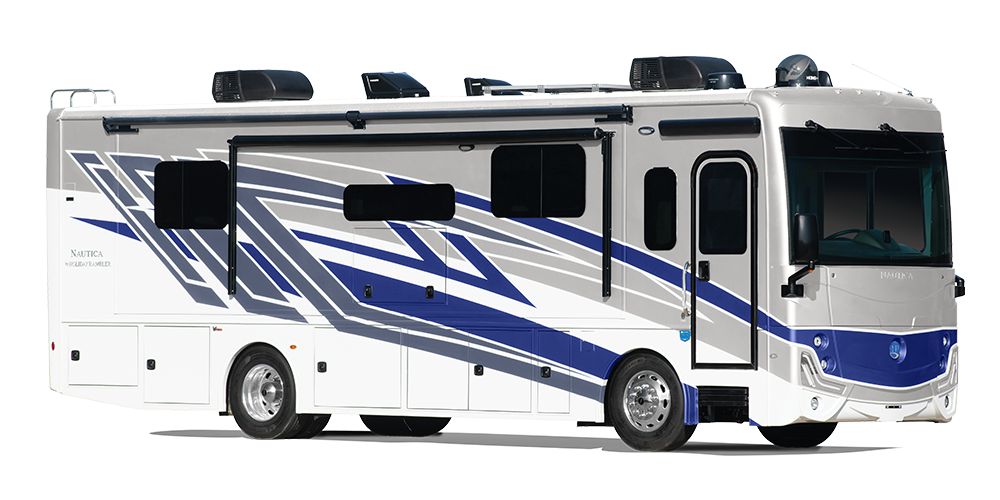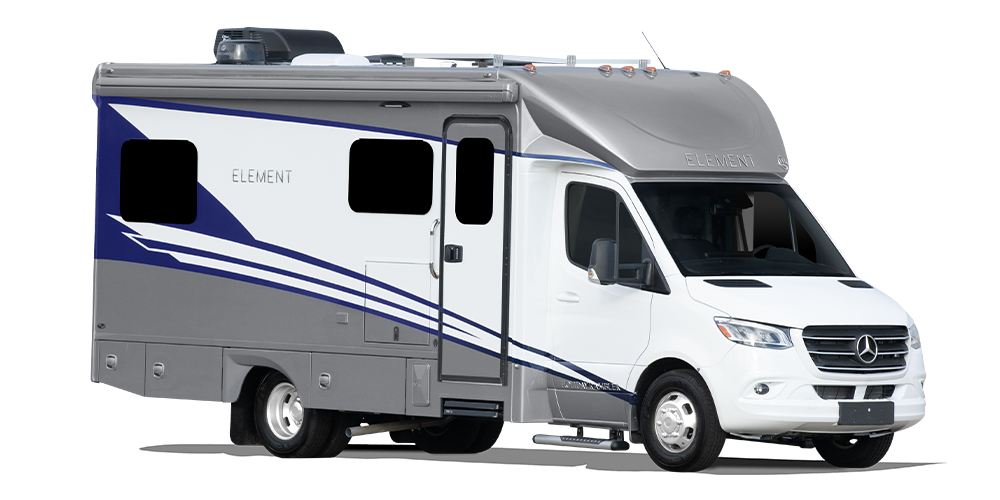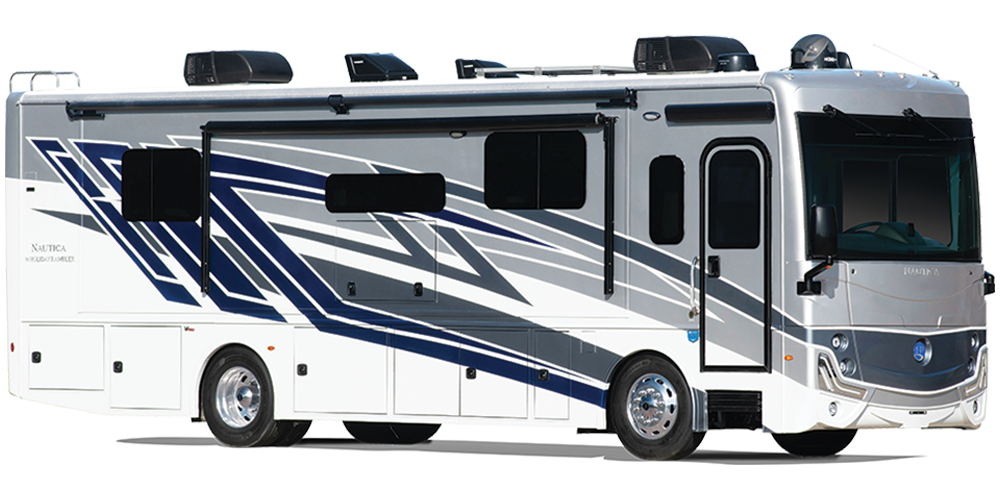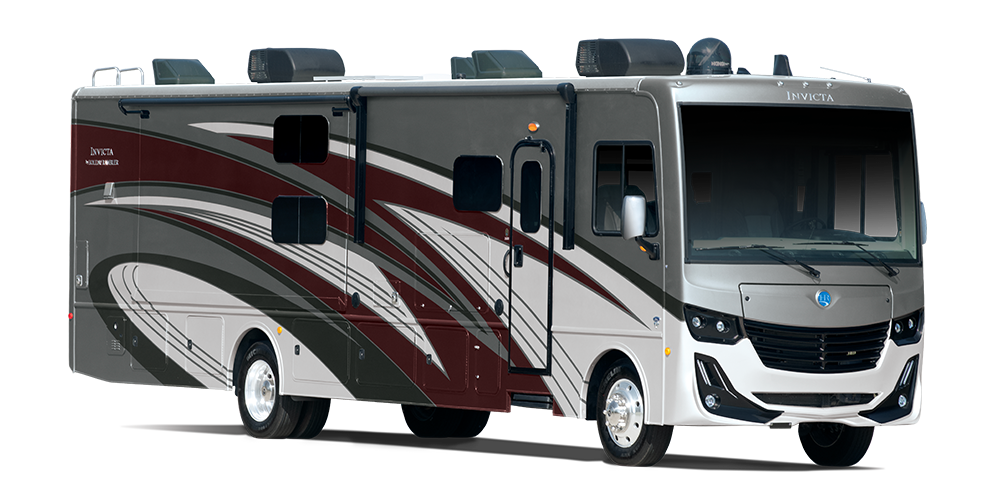Winter Camping Tips
Winter is coming! Which means we all have some big decisions to make regarding our rigs. For many RV owners it’s time to clean, winterize and store their coaches until Spring. (For information on how to winterize your coach click here.) While others keep exploring and adventuring during the winter months, as many full-timers do.
What’s great is that our coaches are made for year-round, all-season travels giving us the flexibility to decide where and how we will adventure during the winter months. We typically see many full-time travelers opt for the snowbird life and hunker down in Florida or Arizona to stay warm through the colder season. And then there are those who embrace the cold to ski/snowboard or see snowcapped mountains, frozen lakes, and crystalized waterfalls. We tend to fall into the latter category, chasing snow rather than running from it.
We spent our first winter traveling full-time in Park City, Utah. While snow eluded us that year, it was still extremely cold, and we learned A LOT about winter camping. The following two winters were a bit like déjà vu. Both years, we ran the same route traveling down the east coast from MD to Florida and then heading west through Louisiana and Texas. Despite trying to do the snowbird thing, we were still met with freezing temperatures in what were supposed to be warmer regions. In 2021/22 we had an ice storm in Myrtle Beach, South Carolina. And then in 2022/23, we experienced sub-freezing temperatures in both Florida and Texas.
Thankfully our Holiday Rambler vacationer is built for all season travels and keeps us warm and cozy through the winter season. So, whether we’re looking for snow and cold, or it comes and finds us, we know we’ll be ready for it. Keeping that in mind there are several items you should have and things to be aware of when taking your coach to winter climates.
We certainly haven’t perfected winter camping, but we have learned a lot and are currently getting our rig ready for winter temperatures and snow as we trek to the pacific northwest for the winter. And yes, we’re doing it on purpose because it’s all a part of the adventure! If you too are planning to winter camp in your coach, here are some things to keep in mind, gear you’ll need/want, and a few tips we have found helpful along the way.
First, you’ll want to keep in mind that many campgrounds in cold weather regions consider the winter off-season and may be closed until spring. So, you’ll be looking for campgrounds that offer year-round camping. Once you find your winter campground(s), you’ll want to ask them about their winter utilities. We’ve seen some campgrounds require you to disconnect your water hose at the hydrant on nights where temps will drop below freezing. Others may require you to wrap the water hydrant with heat tape and insulation to keep it from freezing. Some campgrounds insulate their water pipes or have built in heaters. Either way you’ll want to know what is expected of you regarding your water hookup.
You’ll want to make sure you have a heated water hose it’s an absolute must for winter camping. A standard water hose will freeze very quickly, causing all sorts of issues getting water into your coach. Depending on how long we stay in one spot will determine if we wrap the hydrant or just disconnect the water each night. When temperatures are below freezing during a shorter stay, we disconnect the city water and switch over to our on board fresh water tank overnight for evening water use and then switch back to the city/campground water during the day. This helps to eliminate the potential for frozen hose connections or worse, a burst pipe on the campground side.
Many motorhomes have a built-in method to keep the water tanks from freezing. Some have heating pads on the tanks while other utilize heat from the furnace to warm the tanks. One thing that we also do to keep the fixtures and water filter housing in the utility bay from freezing is put a small 250-watt space heater in there. Since it’s a small space, the heater keeps it as much as 40 degrees warmer inside the cabinet than ambient temperature. We have a remote sensor thermometer that lets us monitor the temp in there and we set an alarm, so it lets us know if the temperature drops below 35 degrees. That way we can act before things get too cold should something go wrong with the space heater.
Keeping things on the inside of the coach nice and warm is obviously important as well. There are several ways to do this, depending on your coach. If the temperature outside isn’t going below 40 degrees, we like to utilize the heat pump function of our rear AC unit and our fireplace (which is also a space heater) to keep the chill away. We also have a portable space heater that we can place and plug in wherever we are spending time if we need a little extra heat. If outside temps are going to dip below freezing, we will utilize our furnaces more often as they also keep our tanks warm while providing a stronger heat inside.
One thing to note is that when staying a month or longer, some campgrounds may charge you for your electricity usage in addition to your monthly rate. We try to use electric heating methods whenever possible as its typically less expensive than propane. Additionally, propane will have to be refilled at some point and we learned the hard way during our stay in Park City just how fast you can burn through your propane while heating your coach.
Our overnight temps were regularly dipping into single digits, so we had to use propane more often. We ended up running out of propane 2 weeks into a month-long stay. And since the propane is attached to the coach, we had to close everything up, unhook, and drive around to the propane fill at the front of the campground. Then come back and set up again. Not an ideal situation. That’s when we also learned about the “extended stay” fitting for the propane tank. This fitting is an aftermarket piece that hooks up in-line with your on-board propane regulator and allows you to hook up and use an external propane tank. This is extremely helpful and more convenient as you can now go refill the bottle instead of having to close up your slides, secure your items and drive your coach to get more propane. If you’re going to be in one spot for a month or longer, this fitting is a life saver!
If you are the type who likes to move around a bit more frequently, even in the winter, there are some other things you’ll want to keep in mind. Depending on where you are and where you’re going to be driving, you may encounter snowy or icy conditions. It’s always best to avoid driving in these types of conditions, but if you happen to get caught in a storm, you’ll want to be prepared. This type of weather is more frequent at higher elevations, and in mountainous areas with steep inclines/declines or high elevation mountain passes. If you’ll be driving through these areas, you’ll want to have tire chains for your drive axle. Even if the weather isn’t bad, some states require you have them on-board to drive over mountain passes. If you’re towing a vehicle, you’ll need snow tires and/or chains for it as well. Not something many people think of when they think about RVing, but it’s better to have them and not need them than the other way around. So far, we have been fortunate and have not needed to use our chains. We have driven in snow a couple times, but it was minor, and we took it slow and easy. But winter can be unpredictable, and you don’t want to be caught in a winter storm without the proper gear. We also recommend having a roadside emergency kit on board as well, winter travel or not. Something with beacon lights or reflective triangles to warn traffic in case you must pull off the road for some reason.
A few other things to keep in mind when winter camping. Check your tire pressures regularly on both the coach and toad vehicle, or better yet, get a good TPMS. It’s always a good idea to check them before every trip, but it’s especially important in colder weather as the pressure will drop as the temperatures decline. Keep your windshield washer fluid reservoir full with de-icing fluid. Clean your side and rear cameras off as they may have accumulated salt or dirt and can obstruct your camera views for changing lanes or backing up. If you have gotten snow or ice during your stay, try to clean as much of it off the roof of your coach as possible. Take extra caution when doing so as everything will obviously be slippery, but the idea is to keep large chunks of snow and ice from flying off your roof as you drive down the road. And of course, we also make sure we have tons of indoor/outdoor blankets on hand plus plenty of hot cocoa. Gotta have the cold weather necessities!
Winter camping is truly an awesome adventure and allows you to experience and see nature in a completely different way. With a little planning and a few specific pieces of gear, you’re bound to have a wonderful experience taking your coach to many winter wonderland places!
Most Popular Blogs
10 Things Anna Vaus Learned Living in a Van on Tour
samanthamcdonald2025-06-23T19:48:51+00:00June 23, 2025|
10 Things Anna Vaus Learned Living in a Van on Tour When singer-songwriter and storyteller [...]
Hitting the Road with Anna Vaus: Her Favorite Stops on the Xpedition Adventure
samanthamcdonald2025-05-08T18:57:05+00:00May 8, 2025|
There’s nothing like seeing the world with a Holiday Rambler behind the wheel — [...]



















